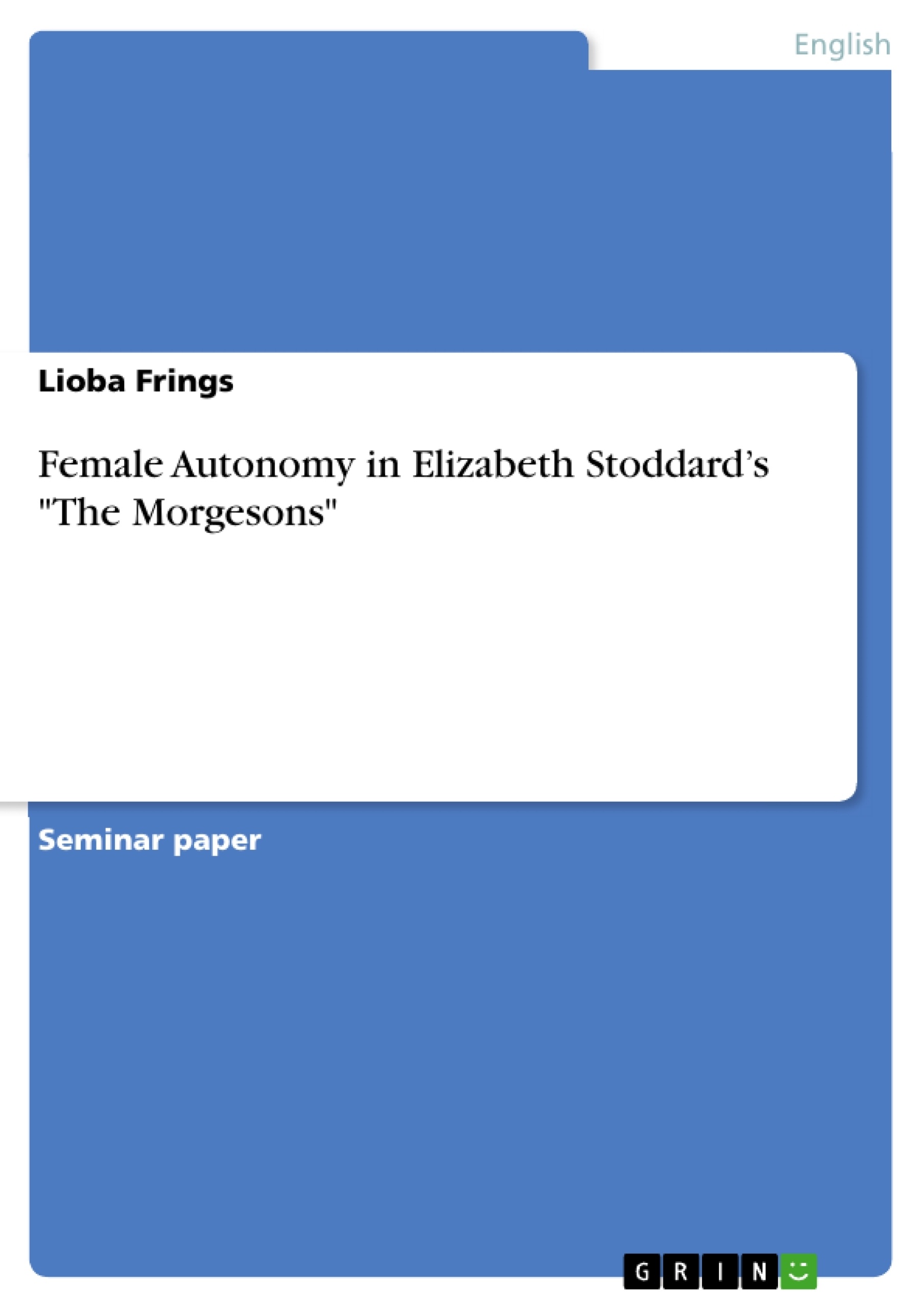A woman’s life in nineteenth-century American society was limited to the domestic sphere, or the household as well as church, and restricted with regard to current and future duties as mothers and wives. While young girls on the one hand need to learn how to fulfill their future duties as mothers and wives, their mothers and teachers on the other hand need to pass their knowledge regarding these duties on to their daughters. Certain gender roles served as the framework for women in society, mainly shaped by the Cult of True Womanhood. Other factors that influenced the role of women were the therewith connected virtues, which a woman was supposed to embody, as well as the common and well-known definition of a ‘True Woman’. With regard to the protagonist in The Morgesons the author “simply disregards the ‘cult of true womanhood’” (Weir 430). Autonomy with regard to women was rare, or even non-existing, and normally unwished-for, especially from the perspective of men, husbands or fathers, who expected every woman to simply take care of household and descendants.
Inhaltsverzeichnis (Table of Contents)
- Introduction
- Female Autonomy and Womanhood in Nineteenth-Century America
- Cassandra Morgeson: Childhood, Education, and Rebellion
- Cassandra Morgeson: Adulthood, Autonomy, and Attitudes Towards Men
- Veronica Morgeson: Childhood, Early Adulthood and Marriage
Zielsetzung und Themenschwerpunkte (Objectives and Key Themes)
This paper examines the theme of female autonomy in Elizabeth Stoddard’s The Morgesons, a novel set in mid-nineteenth-century New England. It analyzes the protagonist, Cassandra Morgeson, as a woman who rejects societal expectations and seeks self-definition. The paper explores the various dimensions of Cassandra's autonomy, including her rebellious behavior as a child and teenager, her disobedience towards authority figures, her romantic and sexual desires, and her rejection of the traditional virtues of piety, purity, submissiveness, and domesticity.
- Female autonomy in nineteenth-century American society
- The Cult of True Womanhood and its impact on women's lives
- Cassandra Morgeson's rebellious nature and pursuit of self-discovery
- The contrasting personalities and choices of Cassandra and Veronica Morgeson
- The significance of intellectual and social development for women in this period
Zusammenfassung der Kapitel (Chapter Summaries)
- Introduction: This chapter introduces the context of female autonomy in nineteenth-century America, highlighting the limitations imposed on women by social norms, the Cult of True Womanhood, and traditional gender roles. The focus then shifts to Elizabeth Stoddard's The Morgesons, introducing the protagonist, Cassandra Morgeson, as a woman who defies these expectations.
- Female Autonomy and Womanhood in Nineteenth-Century America: This chapter explores the concept of autonomy, specifically as it relates to feminist literature and the historical context of nineteenth-century America. It examines the prevailing ideal of the Cult of True Womanhood, which emphasized piety, purity, submissiveness, and domesticity as defining characteristics of feminine virtue. The chapter also discusses the limitations imposed on women's education and roles within society.
- Cassandra Morgeson: Childhood, Education, and Rebellion: This chapter focuses on Cassandra's early life and her rebellious nature. It analyzes her defiance of authority figures, her rejection of traditional education and religious norms, and her intellectual and social development.
- Cassandra Morgeson: Adulthood, Autonomy, and Attitudes Towards Men: This chapter delves into Cassandra's adulthood, exploring her romantic desires, her rejection of piety, and her continued defiance of societal expectations.
- Veronica Morgeson: Childhood, Early Adulthood and Marriage: This chapter presents the contrasting story of Cassandra's younger sister, Veronica. Veronica embodies the traditional expectations of femininity and chooses to conform to societal norms. The chapter explores her marriage and her eventual fate as a young widow.
Schlüsselwörter (Keywords)
The central focus of this paper is on female autonomy, nineteenth-century American society, the Cult of True Womanhood, rebellion, self-discovery, gender roles, education, feminist literature, the protagonist Cassandra Morgeson, and her contrasting sister Veronica Morgeson.
- Citar trabajo
- Lioba Frings (Autor), 2017, Female Autonomy in Elizabeth Stoddard’s "The Morgesons", Múnich, GRIN Verlag, https://www.grin.com/document/368938



